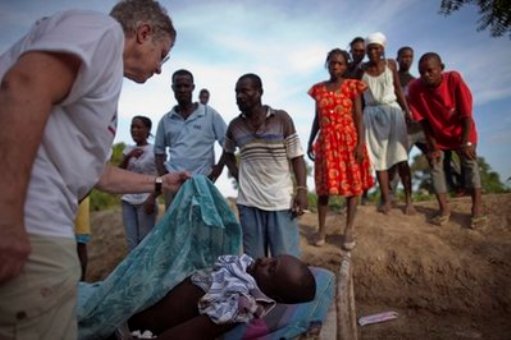
what are its causes,symptoms,prevention,treatment and vaccination (if any).
What is cholera?
Cholera is an acute, diarrheal illness caused by infection of the intestine with the bacterium Vibrio cholerae. the infection is often mild or without symptoms, but sometimes can be severe.
What are cholera symptoms?
Approximately 1 in 20 infected persons has severe disease characterized by:
profuse watery diarrhea,
vomiting, and
leg cramps.
In these persons, rapid loss of body fluids leads to dehydration and shock. Without treatment, death can occur within hours.
How does a person get cholera?
A person may get cholera by drinking water or eating food contaminated with the cholera bacterium. In an epidemic, the source of the contamination is usually the feces (stool) of an infected person. the disease can spread rapidly in areas with inadequate treatment of sewage and drinking water.
The cholera bacterium may also live in the environment in brackish rivers and coastal waters. Shellfish eaten raw have been a source of cholera, and a few persons in the United States have contracted cholera after eating raw or undercooked shellfish from the Gulf of Mexico. the disease is not likely to spread directly from one person to another; therefore, casual contact with an infected person is not a risk for becoming ill.
An acute infectious disease of the small intestine, caused by the bacterium Vibrio cholerae and characterized by profuse watery diarrhea, vomiting, muscle cramps, severe dehydration, and depletion of electrolytes. Also called Asiatic cholera.
Any of various diseases of domesticated animals, such as chickens, turkeys, or hogs, marked by severe gastroenteritis.
cholera is caused by the virus vibirio choleri and it spreads through the contaminated food , not having clean habits etc.. it is safer to put epidemics any function that will be taking place.
Cholera (also called Asiatic cholera) is a water-borne disease caused by the bacterium Vibrio cholerae, which are typically ingested by drinking contaminated water, or by eating improperly cooked fish, especially shellfish.
Cholera is transmitted through ingestion of feces contaminated with the bacterium. the contamination usually occurs when untreated sewage is released into waterways, affecting the water supply, any foods washed in the water, and shellfish living in the affected waterway—it is rarely spread directly from person to person.
The resulting diarrhea allows bacteria to spread to other people under unsanitary conditions
Symptoms include those of general GI tract upset: profuse diarrhea (eg 1L/hour), abdominal cramping, fever, nausea and vomiting. Also those of the resulting dehydration: thirst, muscle cramps, weakness, loss of tissue turgor, sunken eyes and wrinkled skin, severe metabolic acidosis with potassium depletion, anuria, circulatory collapse and cyanosis. Death is through circulatory volume shock (massive loss of fluid and electrolytes), and can occur within hours.
The root causes of these symptoms are the enterotoxins that V. cholerae produces. the main enterotoxin, known as cholera toxin, interacts with G proteins and cyclic AMP in the intestinal lining to open ion channels. as ions flow into the intestinal lumen, water follows through osmosis.
Treatment typically consists of aggressive rehydration and replacement of electrolytes, since the death rate is generally high due to the serious dehydration caused by the illness.
Tetracycline antibiotics may have a role in reducing the duration and severity of cholera, although drug-resistance is occurring,[4] and their effects on overall mortality is questioned